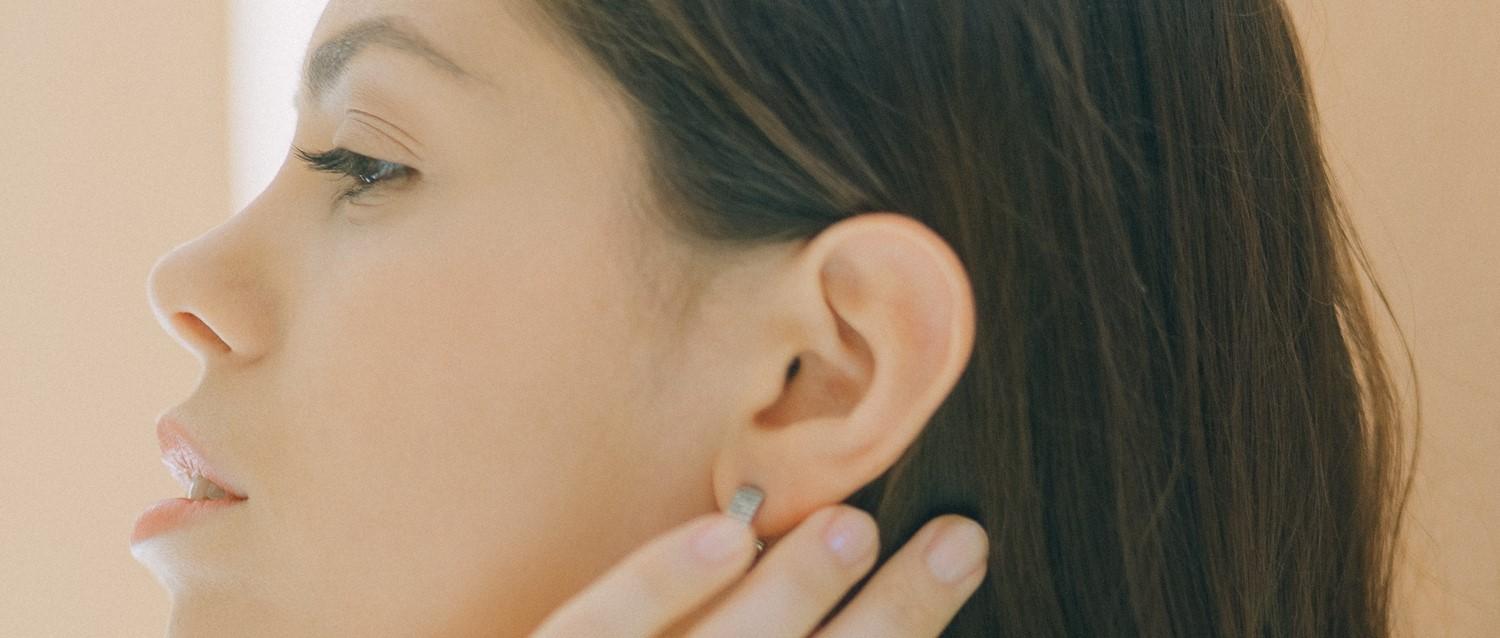
Why has the advice on dealing with earwax blockages changed?
Peer reviewed by Dr Sarah Jarvis MBE, FRCGPAuthored by Amberley DavisOriginally published 22 Nov 2021
Meets Patient’s editorial guidelines
- DownloadDownload
- Share
- Language
- Discussion
Earwax plays an important role in protecting our ears from dirt and bacteria. However, excess earwax can become compacted in the ear and cause earwax blockages, resulting in problems such as hearing loss and earache. Advice on the safety of certain treatment options has changed over the years. It's important to know if you have an increased risk of adverse side-effects from earwax removal methods.
In this article:
Continue reading below
What are the symptoms of earwax blockage?
Many people will have excess earwax at one point or another. Earwax is a natural substance that protects the ear canals by trapping dirt, and normally it falls out of the ear on its own. However, sometimes excess earwax becomes compacted in the ear, causing a blockage.
When an earwax blockage occurs, it can cause some uncomfortable and inconvenient symptoms, and sometimes leads to more serious health complications. One of the main symptoms of earwax build-up is hearing loss, which can have long-lasting consequences if left untreated.
While at-home treatment options for excess earwax exist, it's important to consult your GP if you have any of the following symptoms of earwax blockage:
Persistent hearing loss.
A feeling of fullness in the ear.
Ringing or noises in the ear (tinnitus).
Dizziness.
Your GP will be able to examine your ears and confirm if excess earwax is the cause of your symptoms. It is possible that these signs could be indicative of another medical condition, and self-treating at home without consulting a doctor can mean missing a correct diagnosis.
Earwax removal treatments: ear irrigation vs microsuction
Your GP may be able to offer an earwax removal service if earwax build-up is causing you hearing loss, as recommended in the National Institute for Health and Care Excellence (NICE) guidelines in 2017.
NICE advises healthcare professionals to use either the ear irrigation method or microsuction method. These methods have replaced an older technique known as manual ear syringing, where a syringe manually pumps water into the ear. According to NICE, ear syringing is potentially harmful and should not be used.
What is ear irrigation?
There can be some confusion between this older method of ear syringing and ear irrigation - the name of the former often being used to describe the latter. Yet, the differences in these methods have important safety implications.
The newer method of irrigation involves an electronic machine that pumps a low-pressure flow of water into the ear, which flushes the earwax out. Electronic irrigation allows for better control than manual syringing, making it safer. It is a common method of earwax removal which over 2 million people in England and Wales have done every year, through the NHS or private practices.
What is microsuction?
Microsuction is a dry earwax removal method that uses gentle suction to draw earwax out from the ear. Although there are associated low risks of both irrigation and microsuction, many experts consider microsuction to be a slightly safer technique. Particular groups have an increased risk of side-effects from irrigation (although for most people it is still considered to be a safe treatment).
Historically, microsuction has mainly been available through private healthcare and is still more rarely available through the NHS than irrigation.
Side-effects of microsuction and irrigation
It is worth noting that there are several possible side-effects of both microsuction and irrigation. These include:
Damage to the ear canal and eardrum, including perforation.
Infection of the ear canal and eardrum (otitis externa and otitis media).
Temporary hearing loss (or permanent loss in rare cases).
Tinnitus (a ringing in the ear).
Is microsuction safer than irrigation?
These risks are small for both treatments, but microsuction carries a lower risk compared to irrigation. According to Peter Rea, president of The British Society of Otology, some doctors have stopped offering ear irrigation because more people were claiming symptoms of hearing loss after the treatment.
There are several safety benefits of microsuction when compared to irrigation:
Healthcare professionals use a microscope to view the earwax, ear canal and eardrum, which means they can always see what they are doing.
It is safe to have microsuction if you have an ear infection or a perforated eardrum because the procedure is done without water.
There is minimal contact with the skin of the ear canal and eardrum, which significantly reduces the risk of infection.
The tube through which the earwax is removed comes in different sizes, making it an easier method for narrow ear canals.
Who may irrigation be less safe for?
It is important to establish that recent research has found irrigation to be safe and effective for many people, with the benefits of the treatment outweighing the low chance of side-effects. Instead, caution is given to certain groups who have an increased risk of experiencing adverse side-effects.
One 2020 study has found that the risks are higher among people with a compromised immune system, people with diabetes, and the older population.
NICE guidance also advises against earwax removal by irrigation for people who have any if the following:
Current ear conditions (including a perforated eardrum, an ear infection, and ear dermatitis).
A history of ear surgery, ear perforations, middle ear infections, or previous problems with irrigation.
A grommet currently in place. (Grommets are small plastic tubes placed in the eardrums in an operation).
Discharge of mucus from the ear in the last 12 months.
A cleft palate, whether repaired or not.
Hearing in only one ear if it is the ear to be treated.
The inability to co-operate or sit still (including young children and those with learning difficulties).
How common are microsuction and irrigation treatments?
Following the NICE guidance on treating excess earwax, some people can now have earwax removed in their GP practice if it is impairing their hearing, without a referral to a specialist clinic.
However, earwax removal is not a 'core service' which general practices are obliged to provide. Shortages of trained staff to offer the service means that a significant proportion of practices do not offer it. In addition, those advised to avoid irrigation may struggle to access microsuction through the NHS, as the availability of this method is irregular and will depend on your GP practice.
Continue reading below
At-home excess earwax removal treatments
While it is recommended that you consult your GP if you are experiencing hearing loss or any of the symptoms of earwax blockage, there are treatment options for removing earwax at home. Experts now advise against some of the older methods, and it's important to know which are considered dangerous.
Recommended: ear drops to remove earwax
Ear drops are a safe method of removing earwax and can be very effective if the earwax build-up isn't too large and compacted. Pharmacists will be able to recommend the ear drops to use, including medical-grade olive oil, almond oil, sodium bicarbonate and sodium chloride.
They work by dissolving the earwax, which should eventually fall out of the ear on its own once loosened. Always follow the instructions and consult your GP if treatment hasn't worked after the advised time period.
Unsafe: ear candles to remove earwax
Healthcare professionals advise against the use of ear candles. Professor Rea recalls having to remove bits of ear candles out of people's ears.
This method involves putting a pointed-tipped candle cone inside the ear and lighting the other end, to melt and draw out earwax. Alongside the risk of candle wax blocking the ear, ear candles are unsafe because candle wax can drip on to and burn your skin. There have also been some cases where the hot wax has attached to the eardrum and caused permanent damage.
Unsafe: sticking small objects into your ear
Inserting small objects inside your ear to remove earwax, including cotton buds/Q-tips or your fingers, is very dangerous. There is a high chance that you can damage your ear and puncture your eardrum, which may cause permanent trauma. As well as being unsafe, this method is also highly ineffective, as this usually pushes the earwax further in and makes the problem worse.
Patient picks for Ear

Ear, nose and throat
Anatomy of the ear
Your ears do the remarkable job of allowing you to hear a huge range of sounds, from a whisper to a loud bang. To do this, the ear transforms sound energy into electrical signals which the brain can interpret. Your ears also help to maintain your balance.
by Dr Krishna Vakharia, MRCGP

Ear, nose and throat
Find your balance: 10 natural remedies to treat labyrinthitis at home
The term labyrinthitis might make you think of mazes - or even David Bowie. However, despite its intriguing name, it's a pretty common condition that affects your inner ear. It can cause a variety of symptoms, such as vertigo, dizziness and nausea. We speak with an expert, who shares some natural methods to help alleviate the effects of labyrinthitis.
by Victoria Raw
Continue reading below
Article history
The information on this page is peer reviewed by qualified clinicians.
22 Nov 2021 | Originally published
Authored by:
Amberley DavisPeer reviewed by
Dr Sarah Jarvis MBE, FRCGP

Ask, share, connect.
Browse discussions, ask questions, and share experiences across hundreds of health topics.

Feeling unwell?
Assess your symptoms online for free